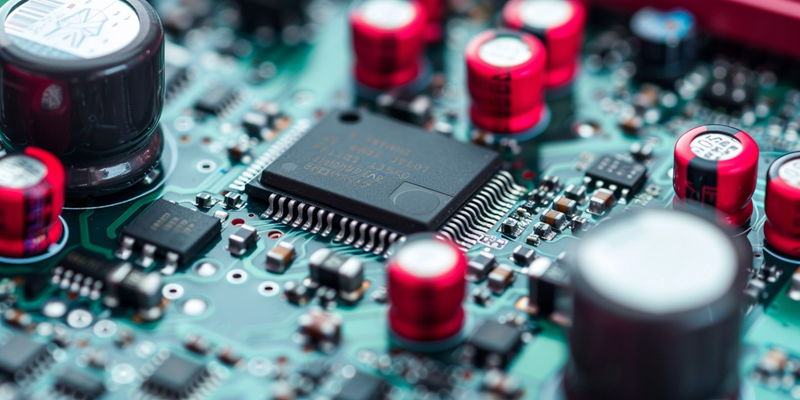Intel’s latest announcement reveals a significant update to their entry-level CPU lineup, focusing primarily on the continued use of Raptor Lake architecture rather than adopting the anticipated Arrow Lake architecture for the Core Ultra 3 series. This decision underscores Intel’s strategy to provide incremental advancements in their entry-level desktop CPUs, opting for a refresh of existing designs rather than a complete overhaul. The entry-level Core Ultra 3 processors are likely to be based on Raptor Lake-S or, potentially, the Redwood Cove core from Meteor Lake CPUs as suggested by industry insiders. This refresh strategy can be seen as a continuation of Intel’s approach to balancing innovation with performance stability, particularly for cost-sensitive market segments. By keeping the Raptor Lake designs, Intel hopes to offer a familiar yet slightly improved experience to users who depend on their entry-level offerings.
Incremental Enhancements in Core i3 Lineup
The current Core i3 lineup has witnessed stagnation over the past few generations, maintaining a consistent setup comprising 4 Performance Cores (P-Cores) with Hyper-Threading (HT) support. These chips have experienced incremental boosts in clock speeds, culminating in the Core i3-14100 SKU, which reaches up to 4.7 GHz. This approach has allowed Intel to achieve modest performance improvements while keeping development costs and risks low. However, with the arrival of the Arrow Lake architecture, some anticipated that Intel would finally revolutionize their entry-level offerings. Yet, it appears this will not be the case for the Core Ultra 3 series, which will continue to use the tried-and-tested Raptor Lake architecture.
The decision to continue using Raptor Lake cores for the entry-level CPUs can be attributed to several factors. One major consideration is the cost associated with developing and implementing a completely new architecture. For entry-level CPUs, where profit margins are slim, the financial prudence of reusing existing designs cannot be overstated. Moreover, the performance gains from such a refresh, although incremental, still provide enough improvement to maintain competitive standing in the market. This ongoing evolution echoes Intel’s commitment to refining their product lines in a way that prioritizes consumer satisfaction while cautiously navigating the ever-changing landscape of CPU technology.
Technical Advancements Without Arrow Lake
Arrow Lake is anticipated to eliminate Hyper-Threading support, limiting the entry-level CPUs to 4 P-Cores without Efficiency Cores (E-Cores). This change could result in only minor performance increases, yet it signifies a shift in architectural design philosophy. While Arrow Lake’s absence in the entry-level lineup might disappoint some tech enthusiasts, it’s essential to recognize the underlying benefits of Intel’s decision. By reserving Arrow Lake for higher-tier processors such as Core Ultra 5, Core Ultra 7, and Core Ultra 9, Intel can concentrate their cutting-edge innovations where they are most needed while ensuring entry-level CPUs remain reliable and reasonably priced.
Furthermore, codec specifications for Arrow Lake-S and Arrow Lake-HX CPUs reveal a focus on incremental improvements rather than groundbreaking changes. While these CPUs will lack a dedicated transcoding API and hardware codec for H.264 Scalable Video Coding (SVC), they will feature hardware acceleration for video processing and support up to 16 simultaneous Full HD decode streams. These technical details highlight Intel’s strategy of incorporating improvements that enhance specific aspects of computing performance without overhauling the entire architecture. By doing so, Intel can maintain performance consistency while gradually introducing new features that benefit everyday users.
Balancing Innovation and Performance Stability
Arrow Lake is expected to abandon Hyper-Threading support, restricting entry-level CPUs to 4 Performance Cores (P-Cores) without Efficiency Cores (E-Cores). This modification might lead to only slight performance gains but marks a significant shift in architectural strategy. Although Arrow Lake’s exclusion from the entry-level market might disappoint some tech fans, it’s crucial to understand the benefits behind Intel’s strategy. By confining Arrow Lake to higher-tier processors like Core Ultra 5, Ultra 7, and Ultra 9, Intel can focus its most advanced innovations on where they are truly needed, while ensuring entry-level CPUs remain dependable and affordable.
Moreover, the codec specifications for Arrow Lake-S and Arrow Lake-HX CPUs emphasize incremental advancements over revolutionary changes. These CPUs won’t carry a dedicated transcoding API or hardware codec for H.264 Scalable Video Coding (SVC), but they will offer hardware acceleration for video processing and support up to 16 simultaneous Full HD decode streams. These specifics underline Intel’s approach of enhancing particular performance aspects without overhauling the entire architecture. This gradual introduction of new features allows Intel to maintain a stable performance baseline while steadily improving user experience.

